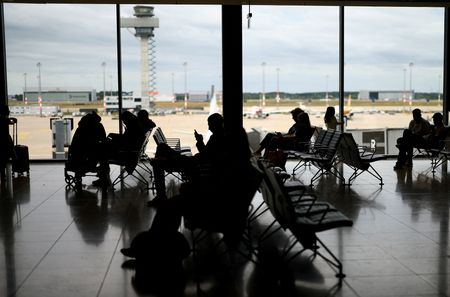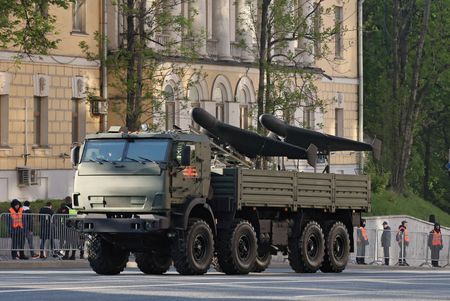By Giulio Piovaccari and Valentina Za
MILAN (Reuters) -Stellantis reported a preliminary 2.3 billion euro ($2.7 billion) first-half loss as it faces the dual challenge of revamping its product ranges in Europe and the United States while also dealing with the impact of U.S. tariffs on vehicles and auto parts.
Stellantis said on Monday it booked 3.3 billion euros in pre-tax charges for the first half as it cancelled programmes, including a hydrogen fuel cell project, kept setting aside money for fines linked to U.S. pre-Trump carbon emission regulation, while investing more in popular hybrid cars in Europe and large gasoline-powered models in the U.S. market.
The automaker’s results were “worse than consensus, but we think poor numbers were anticipated,” Jefferies analyst Philippe Houchois wrote in a client note.
Bernstein analysts said that despite a “big” earnings miss, restructuring steps taken by Stellantis “suggest decisive actions”.
Earlier this month, Stellantis unveiled a 17,000 euro hybrid Fiat 500, which the automaker is banking on to revive its ailing production in Italy.
The owner of a sprawling portfolio of brands including Fiat, Peugeot, Chrysler and Jeep, said President Donald Trump’s tariffs have cost it 300 million euros so far as the company reduced vehicle shipments and cut some production to adjust manufacturing levels.
Stellantis’ loss, versus a 5.6 billion euro net profit a year earlier, underscores the tough challenges for new CEO Antonio Filosa, who was appointed in May after a disastrous performance in the company’s crucial U.S. market in 2024 forced the ouster of former boss Carlos Tavares.
Filosa on Monday promised that 2025 would be “a year of gradual and sustainable improvement” for the automaker after a “tough first half, with increasing external headwinds”.
“Despite difficulties, it has also been six months of meaningful progress compared to the second half of 2024,” he said in a letter to employees seen by Reuters.
Under Tavares, industry experts said Stellantis had priced itself out of the U.S. market and failed to update popular models, leaving the company with vast numbers of unsold cars. Stellantis’ North American sales fell 25% year-on-year in the second quarter, it said on Monday, showing the automaker still has a long way to go.
Stellantis also said that it was seeing weak demand in Europe, especially for vans.
Milan-listed shares in the automaker pared losses and were down 0.8% by 1135 GMT after falling as much as 3.9% in morning trade. They are down 37% since the start of the year.
Rival Renault’s shares fell as much as 18% last week when it issued a profit warning citing softening demand for cars and vans in Europe.
BURNING CASH
Last year, Stellantis imported over 40% of the 1.2 million vehicles it sold in the United States, mostly from Mexico and Canada. In April this year, the company said it had reduced vehicle imports in response to tariffs and would calibrate “production and employment to reduce impacts on profitability”.
In April, Stellantis suspended its profit forecasts for 2025 due to uncertainty about tariffs, but said on Monday it was publishing its unaudited preliminary financial data to align analyst forecasts with the group’s actual performance.
The group’s first-half revenue totalled 74.3 billion euros, down from 85 billion euros in the first half of 2024, but up from the second half of 2024 when revenue totalled 71.8 billion euros.
“Results reflect the early stages of actions being taken to improve performance and profitability, with new products expected to deliver larger benefits in the second half of 2025,” JPMorgan analysts said in a note.
Stellantis, which will disclose its final results for the first half on July 29, said it burnt through 2.3 billion euros of cash in the January-June period.
Overall second-quarter shipments fell by 6% compared to the same period last year, to an estimated 1.4 million vehicles, it said.
($1 = 0.8595 euros)
(Additional reporting by Enrico Sciacovelli; writing by Giulio Piovaccari and Nick Carey; editing by Milla Nissi-Prussak, Susan Fenton and Louise Heavens)










